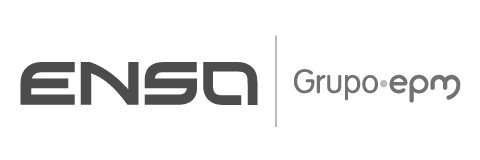Challenges
Solutions
Cyber-attacks on critical infrastructure are one of the five current global risks according to the World Economic Forum, alongside the energy supply crisis, living costs, the risk of inflation and the food chain crisis.
Cyber attacks targeting critical infrastructure have increased in recent years, especially in the wake of the Russian invasion of Ukraine. Although these types of cyber-attacks are not the most numerous, they have the greatest impact, as they can jeopardize the continuity of an essential service such as a hospital, an airport or a water treatment plant, affecting the safety, health or welfare of citizens. A clear example of this was the ransomware attack on the Colonial Pipeline that in May 2021 left the East Coast of the United States without fuel. The massive attack on public institutions in Costa Rica or the one that paralyzed rail transport in Denmark, both in 2022, are other cases that demonstrate the impact of an incident of these characteristics.
All these solutions, moreover, come with advanced Microsoft 365 support that, by applying optimal cybersecurity configurations, enables system monitoring, identifying personal data security breaches, disaster recovery and notifying those breaches to the data protection authority and customers.
The healthcare sector has once again been the protagonist in the last year of ransomware attacks with great impact on healthcare activity and leaking confidential patient information.
Main risks of critical infrastructures:
Segment networks
In this way, the most critical environments are less exposed to the outside world.
Updating devices
Contacting the manufacturer to see if there are any patches or software updates.
Adopt new protection systems
Endowed with artificial intelligence and machine learning to gain detection and reaction capacity.
Update and establish more restrictive security policies
Adapt them to changes in your architecture
Auditing OT security
In addition to examining the IT part of the organization, it is also essential to identify any anomalous behavior in the industrial machinery network.
Implementing a 'Zero Trust' security strategy
This type of policy protects an organization through the continuous control and verification of each authentication, transaction and access to information. In this way, it contemplates both internal risks, including those of the employees themselves, as well as those of third parties, whether they are service providers or suppliers.
"Cybersecurity should not be seen as an expense, but as an investment."
Cyber-attacks have become more sophisticated and increasingly targeted. All this, added to the fact that exposure to risk has increased due to the expansion of teleworking and hyperconnectivity through the Internet of Things, makes it essential to have a cybersecurity monitoring, auditing and prevention service.
Do you want to know more about the services that Sofistic, Cuatroochenta's cybersecurity unit, can offer you to guarantee the security of your company?




